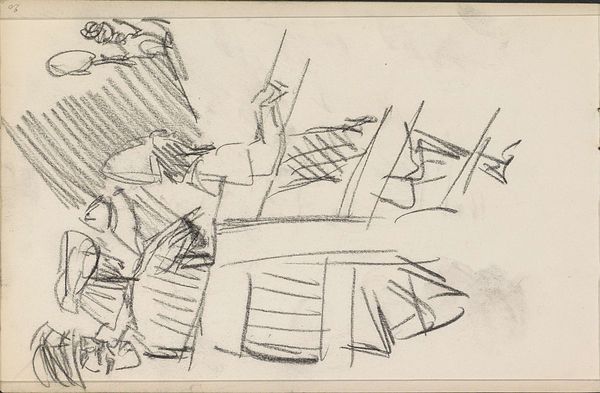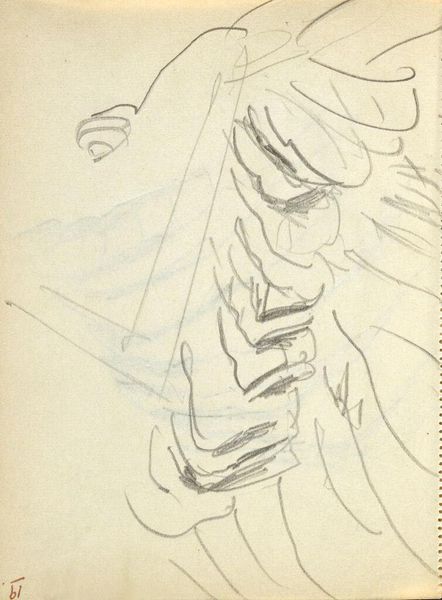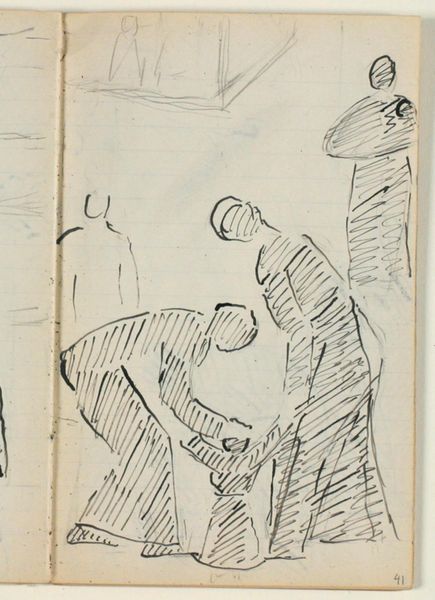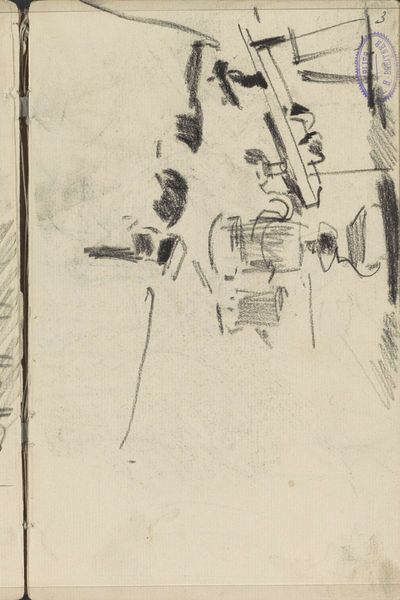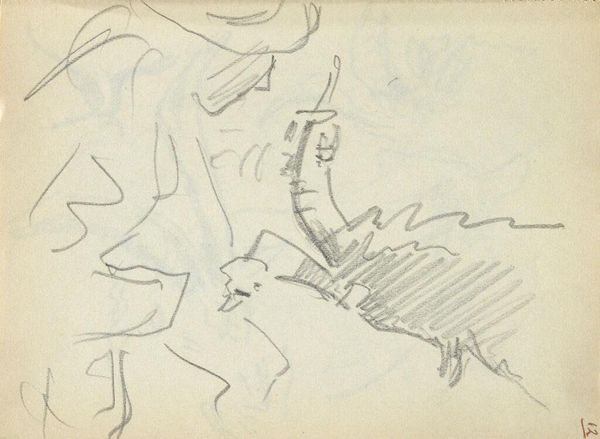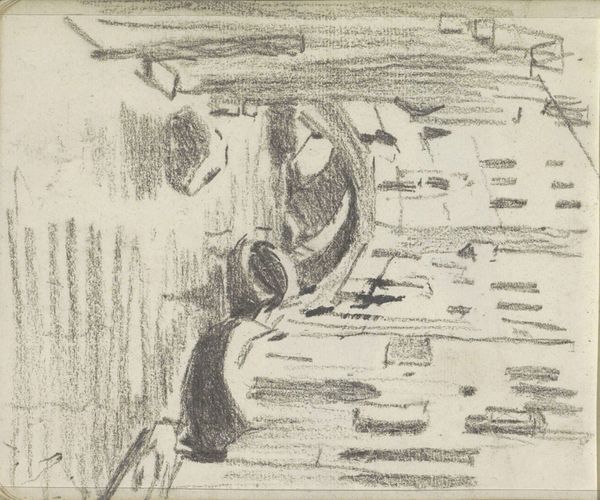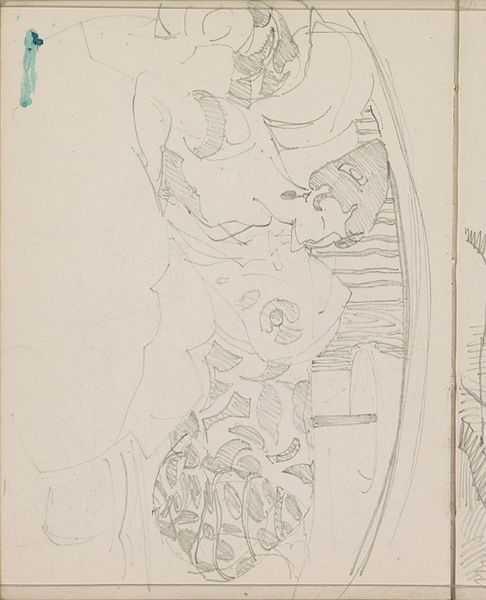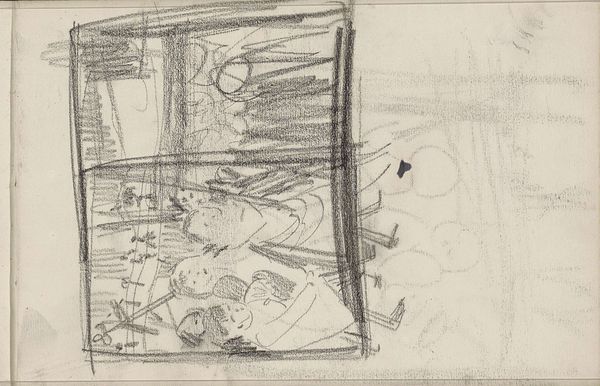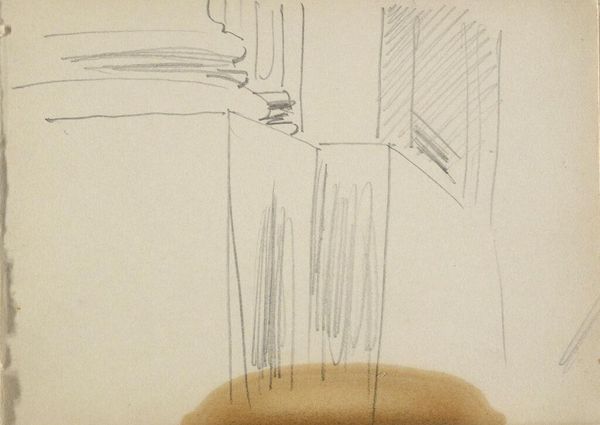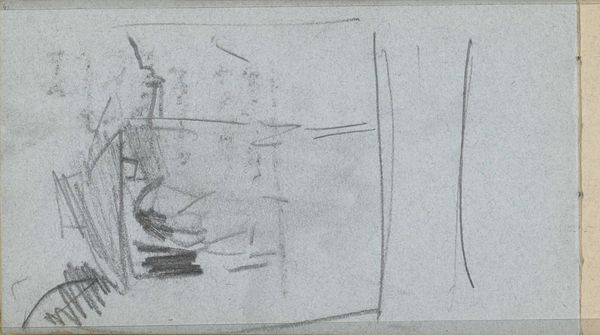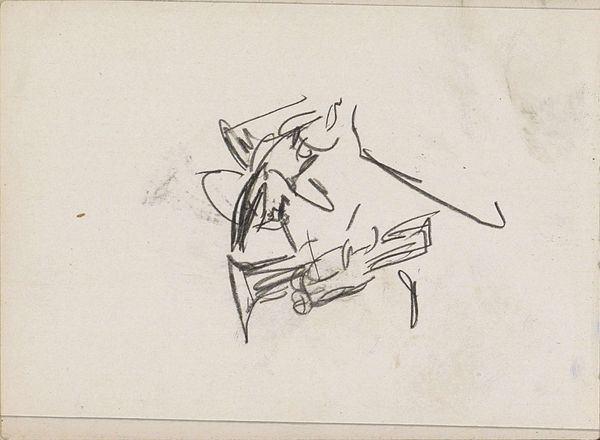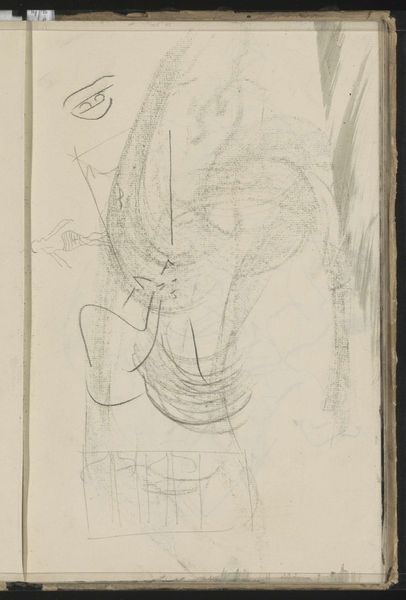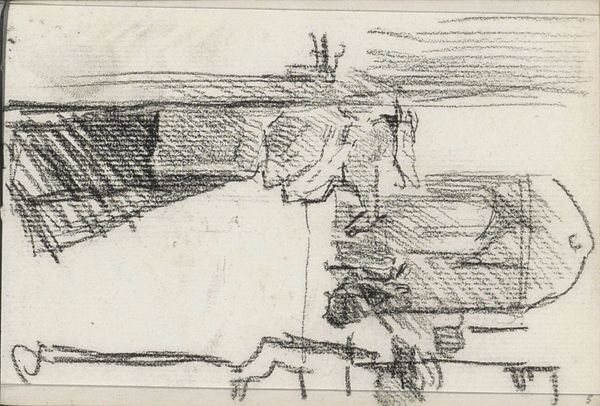
drawing, paper, ink, pen
#
drawing
#
cubism
#
pen sketch
#
paper
#
ink
#
pen-ink sketch
#
abstraction
#
men
#
pen
#
musical-instrument
Copyright: Gosta Adrian-Nilsson,Fair Use
Curator: This pen and ink drawing is entitled "Composition with musical instruments" and is by the Swedish artist Gösta Adrian-Nilsson. The work evokes an immediate feeling of melancholy to me, even if the subject matter is generally associated with uplifting sentiments. Editor: Yes, I sense that mood too, that's very palpable! There's a fragility here, evoked not just through the delicate medium of ink on paper but in the seemingly unstable arrangement of shapes. It is like these forms could fall at any moment, as the weight isn't properly distributed and they simply balance on top of one another. Curator: Absolutely, this unsettling arrangement might be a product of the period it was produced in, which saw significant upheaval, and social and political realignment in Sweden and the rest of Europe. GAN, as the artist is also known, had been engaging with cubism for some time when he made this drawing, and it's interesting how he employed its fragmented language in an almost wistful, yearning manner. Editor: Indeed, he isn't simply appropriating cubist style here, instead, he's layering a human dimension of raw emotionality atop the geometry. The visible labor is really evident with all these very visible hatched and expressive linework marks, making no attempt to disguise the medium and working process. There's an inherent vulnerability in laying bare your artistic process like that. It reflects that fragility that we noted. Curator: I agree. And considering the musical instruments depicted, a piano and a violin, it's interesting how GAN seems to have bypassed any representation of musicians here. I'm wondering if it implies a more generalized view about the instability of musical culture or of society more broadly? A missing element that once completed this harmony but no longer can? Editor: Good point. This omission turns the instruments into pure objects divorced from any direct utility or performance. I begin to reflect on questions around production itself—who produced these instruments? For whom were they made? There is an aspect of music consumption made very available due to capitalist infrastructure, like the sheets on the drawing; that may also touch upon GAN's intended political or artistic stance at this time. Curator: Thank you. These connections you draw really bring an extra dimension to interpreting this work and GAN’s motivations as a society. Editor: And considering your perspectives regarding how social and political currents shaped not just the image, but also our emotional reaction, offers an insightful angle too. Thank you.
Comments
No comments
Be the first to comment and join the conversation on the ultimate creative platform.
